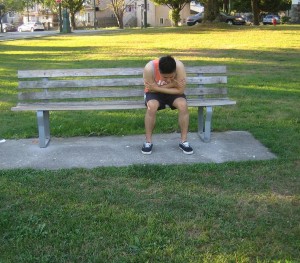A lightning strike injury is one of the top weather-related causes of death. Most victims who are injured or died by a lightning strike occur outdoor while engaging in recreational activities such as swimming, fishing, boating or playing sports.
Types of lightning strikes
A lightning strike injury can occur in various ways such as:
- Direct – lightning strikes an individual directly
- Contact – An individual touches an object that was struck by lightning
- Side splash – the lightning jumps from the primary object that was struck while on its way to the ground
- Ground – lightning hits the ground and the current spreads out in a circular manner from the site
- Blunt injury – an individual is violently thrown from the strike or due to an unpredictable force that occurs as the adjacent air is overly heated and quickly cooled

If an individual was struck by lightning, he/she might have immediate cardiac arrest. - Upward streamer – if a low-energy electrical charge radiates upwards to meet with a downward leader, it holds enough current to trigger an electrical injury even if it does not link with the downward current to complete the strike
What are the indications of a lightning strike?
If an individual was struck by lightning, he/she might have immediate cardiac arrest. In some cases, there are no evident indications of injury. Some might lose consciousness for fluctuating periods.
The individual might appear confused and could not remember what happened. The lightning might even flash over the exterior of the individual, blow off their clothes and leave only a few evident indications of injury.
Other injuries include the following:
- Cardiac arrest or heart damage
- Superficial burns
- Some individuals who sustained a lightning injury end up with keraunoparalysis which results to brief paralysis
- Various forms of fractures and dislocations
- Damaged lungs that leads to shortness of breath
- Cervical spine and skull injuries associated to blunt trauma
- Eye injury that leads to visual issues or delayed cataract formation
- Ruptured eardrum that causes hearing loss, pain and dizziness
When to seek medical care
Call for emergency assistance if any of these are present:
- Paralysis
- Loss of consciousness
- Chest pain
- Back or neck pain
- Shortness of breath
- Any noticeable burns
- Evident deformity of the extremities such as the leg or arm
Disclaimer / More Information
The information posted on this page on a lightning strike injury is for learning and educational purposes only. To learn to recognize and manage sudden medical emergencies including a lightning strike injury, register for first aid training at one of our training centers located throughout Canada. The training centers are in Edmonton, Saskatoon, Calgary, Vancouver, Kelowna, Surrey, Winnipeg, Toronto, Ottawa and Halifax.

